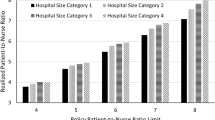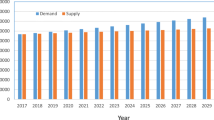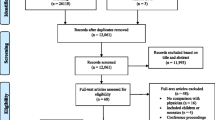Abstract
Objective
Capacity assessments serve as surrogates for surgical output in low- and middle-income countries where detailed registers do not exist. The relationship between surgical capacity and output was evaluated in Ghana to determine whether a more critical interpretation of capacity assessment data is needed on which to base health systems strengthening initiatives.
Methods
A standardized surgical capacity assessment was performed at 37 hospitals nationwide using WHO guidelines; availability of 25 essential resources and capabilities was used to create a composite capacity score that ranged from 0 (no availability of essential resources) to 75 (constant availability) for each hospital. Data regarding the number of essential operations performed over 1 year, surgical specialties available, hospital beds, and functional operating rooms were also collected. The relationship between capacity and output was explored.
Results
The median surgical capacity score was 37 [interquartile range (IQR) 29–48; range 20–56]. The median number of essential operations per year was 1480 (IQR 736–1932) at first-level hospitals; 1545 operations (IQR 984–2452) at referral hospitals; and 11,757 operations (IQR 3769–21,256) at tertiary hospitals. Surgical capacity and output were not correlated (p > 0.05).
Conclusions
Contrary to current understanding, surgical capacity assessments may not accurately reflect surgical output. To improve the validity of surgical capacity assessments and facilitate maximal use of available resources, other factors that influence output should also be considered, including demand-side factors; supply-side factors and process elements; and health administration and management factors.

Similar content being viewed by others
References
Carlson LC, Lin JA, Ameh EA, Mulwafu W, Donkor P, Derbew M et al (2015) Moving from data collection to application: a systematic literature review of surgical capacity assessments and their applications. World J Surg 39(813–82):1. https://doi.org/10.1007/s00268-014-2938-8
Stewart BT, Quansah R, Gyedu A, Boakye G, Abantanga F, Ankomah J et al (2015) Serial assessment of trauma care capacity in Ghana in 2004 and 2014. JAMA Surg 2015:1–8
Mock CN, Donkor P, Gawande A, Jamison DT, Kruk ME, Debas HT et al (2015) Essential surgery: key messages from disease control priorities, 3rd edition. Lancet 385:2209–2219
Price RI, Makasa E, Hollands M (2015) Strengthening emergency and essential surgical care and anesthesia as a component of universal health coverage—addressing the public health gaps arising from lack of safe, affordable and accessible surgical and anesthetic services. World J Surg 39(9):2115–2125. https://doi.org/10.1007/s00268-015-3153-y
Weiser TG, Regenbogen SE, Thompson KD, Haynes AB, Lipsitz SR, Berry WR et al (2008) An estimation of the global volume of surgery: a modelling strategy based on available data. Lancet 372(139–14):4
Bolkan HA, Von Schreeb J, Samai MM, Bash-Taqi DA, Kamara TB, Salvesen O et al (2015) Met and unmet needs for surgery in Sierra Leone: a comprehensive, retrospective, countrywide survey from all health care facilities performing operations in 2012. Surgery 157:992–1001
http://www.who.int/surgery/publications/s15986e.pdf?ua=1. 31 Dec 2015
Mock C, Lormand J, Goosen J, Joshipura M, Peden M (2004) Guidelines for essential trauma care. World Health Organization, Geneva
WHO (2013) WHO generic essential emergency equipment list. In: care Eaes editor Integrated Management for Emergency and Essential Surgical Care (IMEESC) toolkit. World Health Organization, Geneva
Osen H, Chang D, Choo S, Perry H, Hesse A, Abantanga F et al (2011) Validation of the World Health Organization tool for situational analysis to assess emergency and essential surgical care at district hospitals in Ghana. World J Surg 35(500–50):4. https://doi.org/10.1007/s00268-010-0918-1
Markin A, Barbero R, Leow JJ, Groen RS, Skow EJ, Apelgren KN et al (2013) A quantitative analysis of surgical capacity in Santa Cruz, Bolivia. J Surg Res 185:190–197
World_Bank_Group (2014). http://data.worldbank.org/indicator/NY.GNP.PCAP.CD/countries. 29 July 2014
Zakariah A, Degbotse D, Osei D, Ofosu A, Nyagblornu N, Bjerrum A (2014) Holistic assessment of the health sector programme of work 2013. Ghana Ministry of Health, Accra
Stewart BT, Quansah R, Gyedu A, Ankomah J, Donkor P, Mock C (2015) Strategic assessment of trauma care capacity in Ghana. World J Surg 39:2428–2440. https://doi.org/10.1007/s00268-015-3132-3
Gyedu A, Baah EG, Boakye G, Ohene-Yeboah M, Otupiri E, Stewart BT (2015) Quality of referrals for elective surgery at a tertiary care hospital in a developing country: an opportunity for improving timely access to and cost-effectiveness of surgical care. Int J Surg 15C(74–7):8
Stewart BT, Tansley G, Gyedu A, Ofosu A, Donkor P, Appiah-Denkyira E et al (2016) Mapping population-level spatial access to essential surgical care in Ghana using availability of bellwether procedures. JAMA Surg 151(8):e161239. https://doi.org/10.1001/jamasurg.2016.1239
Ankomah J, Stewart BT, Oppong-Nketia V, Koranteng A, Gyedu A, Quansah R et al (2015) Strategic assessment of the availability of pediatric trauma care equipment, technology and supplies in Ghana. J Pediatr Surg 50(11):1922–1927
Stewart BT, Tansley G, Gyedu A, Ofosu A, Donkor P, Appiah-Denkyira E et al (2016) Mapping population-level spatial access to essential surgical care in Ghana using availability of bellwether procedures. JAMA Surg 151:e161239
Debas HT, Donkor P, Gawande A, Jamison DT, Kruk ME, Mock CN (2015) Essential Surgery. In: Jamison DT, Nugent R, Gelband H et al (eds) disease control priorities, 3rd edn. International Bank for Reconstruction and Development/The World Bank, Washington
Etikan I, Musa S, Alkassim R (2015) Comparison of convenience sampling and purposive samplings. Am J Theor Appl Stat 5:1–4
Mock C, Nguyen S, Quansah R, Arreola-Risa C, Viradia R, Joshipura M (2006) Evaluation of trauma care capabilities in four countries using the WHO-IATSIC guidelines for essential trauma care. World J Surg 30(946–95):6. https://doi.org/10.1007/s00268-005-0768-4
Shah MT, Bhattarai S, Lamichhane N, Joshi A, LaBarre P, Joshipura M et al (2015) Assessment of the availability of technology for trauma care in Nepal. Injury 46(1712–171):9
Shah MT, Joshipura M, Singleton J, LaBarre P, Desai H, Sharma E et al (2014) Assessment of the availability of technology for trauma care in India. World J Surg 39(363–37):2. https://doi.org/10.1007/s00268-014-2805-7
Son NT, Thu NH, Tu NT, Mock C (2007) Assessment of the status of resources for essential trauma care in Hanoi and Khanh Hoa. Vietnam Inj 38:1014–1022
Daniels KM, Riesel JN, Meara JG (2015) The scale-up of the surgical workforce. Lancet 385(Suppl 2):S41
Chu KM, Ford NP, Trelles M (2011) Providing surgical care in Somalia: a model of task shifting. Confl Health 5:12
Bolkan HA, van Duinen A, Waalewijn B, Elhassein M, Kamara TB, Deen GF et al (2017) Safety, productivity and predicted contribution of a surgical task-sharing programme in Sierra Leone. Br J Surg 104:1315–1326
Shrime MG, Verguet S, Johansson KA, Desalegn D, Jamison DT, Kruk ME (2016) Task-sharing or public finance for the expansion of surgical access in rural Ethiopia: an extended cost-effectiveness analysis. Health Policy Plann 31(706–71):6
Choo S, Perry H, Hesse AA, Abantanga F, Sory E, Osen H et al (2010) Assessment of capacity for surgery, obstetrics and anaesthesia in 17 Ghanaian hospitals using a WHO assessment tool. Trop Med Int Health TM & IH 15:1109–1115
Linden A, Mantyniemi S (2011) Using the negative binomial distribution to model overdispersion in ecological count data. Ecology 92(1414–142):1
Lee AH, Wang K, Yau KK, Somerford PJ (2003) Truncated negative binomial mixed regression modelling of ischaemic stroke hospitalizations. Stat Med 22(1129–113):9
Baker LC, Schoenman JA, Murphy B, Chockley N (2008) The challenges of health system capacity growth. National Institute for Health Care Management (NIHCM) Foundation, Washington
Lindsey JK, Jones B (1998) Choosing among generalized linear models applied to medical data. Stat Med 17(59–6):8
Pourhoseingholi A, Baghban AA, Zayeri F, Alavian SM, Vahedi M (2013) Statistical count models for prognosis the risk factors of hepatitis C. Gastroenterol Hepatol Bed Bench 6(41–4):7
Stewart BT, Gyedu A, Abantanga F, Abdulai AR, Boakye G, Kushner A (2015) Barriers to essential surgical care in low- and middle-income countries: a pilot study of a comprehensive assessment tool in Ghana. World J Surg. https://doi.org/10.1007/s00268-015-3168-4
Tansley G, Stewart BT, Gyedu A, Boakye G, Lewis D, Hoogerboord M et al (2016) The correlation between poverty and access to essential surgical care in Ghana: a geospatial analysis. World J Surg. https://doi.org/10.1007/s00268-016-3765-x
Nathens AB, Jurkovich GJ, Rivara FP, Maier RV (2000) Effectiveness of state trauma systems in reducing injury-related mortality: a national evaluation. J Trauma 48:25–30 (discussion 30-21)
Stewart BT, Gyedu A, Quansah R, Addo WL, Afoko A, Agbenorku P et al (2015) District-level hospital trauma care audit filters: Delphi technique for defining context-appropriate indicators for quality improvement initiative evaluation in developing countries. Injury 47:211–219
Lanktree E, Corluka A, Cohen M, Larocque R (2014) Addressing the human resources for health crisis through task-shifting and retention: results from the Africa Health Systems Initiative Support to African Research Partnerships program. Hum Resour Health 12(Suppl 1):I2
Bradley EH, Taylor LA, Cuellar CJ (2015) Management matters: a leverage point for health systems strengthening in global health. Int J Health Policy Manag 4(411–41):5
Murray CJ, Frenk J (2000) A framework for assessing the performance of health systems. Bull World Health Organ 78(717–73):1
Sen A (1979) The tanner lecture on human values. Stanford University, Stanford
Sen A (1985) Commodities and capabilities. Oxford University Press, Amsterdam & New York, North-Holland
Stewart BT, Editorial Commentary on Bolkan et al (2016) The surgical workforce and surgical provider productivity in Sierra Leone: a countrywide inventory. World J Surg. https://doi.org/10.1007/s00268-016-3417-1
Acknowledgements
This study was funded, in part, by grants from: the University of Washington Department of Surgery Research Reinvestment Fund; and grants (R25-TW009345; D43-TW007267) from the Fogarty International Center, US National Institutes of Health. The content is solely the responsibility of the authors and does not necessarily represent the official views of the National Institutes of Health. The authors thank Victor Oppong-Nketia and Adofo Koranteng for their assistance with hospital visits. In addition, we thank the Ghana Ministry of Health, Regional Health Directorates, and hospital staff for facilitating site visits.
Author information
Authors and Affiliations
Corresponding author
Ethics declarations
Conflict of interest
No benefits in any form have been received or will be received from a commercial party related directly or indirectly to the subject of this article.
Rights and permissions
About this article
Cite this article
Stewart, B.T., Gyedu, A., Gaskill, C. et al. Exploring the Relationship Between Surgical Capacity and Output in Ghana: Current Capacity Assessments May Not Tell the Whole Story. World J Surg 42, 3065–3074 (2018). https://doi.org/10.1007/s00268-018-4589-7
Published:
Issue Date:
DOI: https://doi.org/10.1007/s00268-018-4589-7




